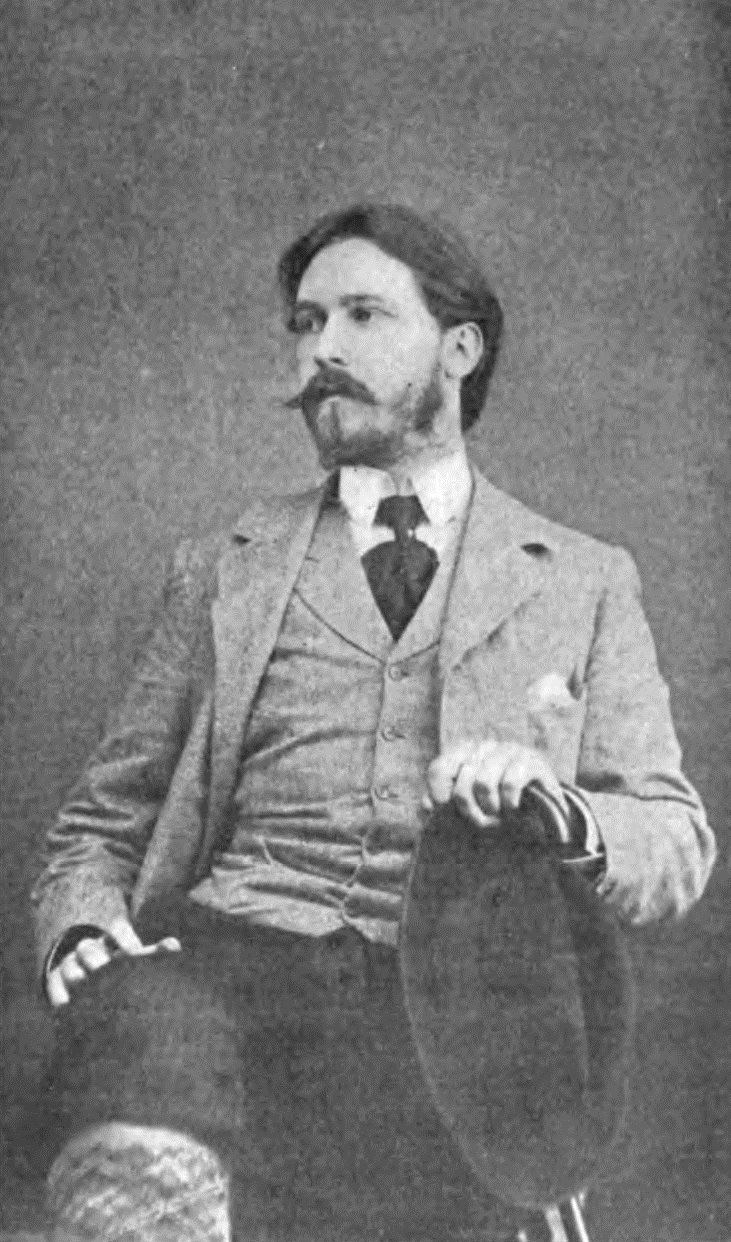More about Albert Herter
Works by Albert Herter

Contributor
Albert Herter was one of those all-star artists that you've never heard of.
The man worked in nearly every medium that existed in America at the end of the 19th century. And I very much mean every kind. He is most famous for his murals, but also did portraits, illustrations, interior decoration; he even wrote a play called The Gift of Eternal Life. However, all of these things pale in comparison to what is easily his greatest accomplishment: being the western world's first great modern nerd.
I know what you are thinking. “That is impossible, this man lived during the late 19th century, J.R.R. Tolkien hadn’t even come out with "The Hobbit" yet, this man is no nerd.” While that is true, it doesn’t change the fact that the evidence against this man is irrefutable. Probably most condemning are his self-portraits. Many artists create self portraits, but most of the time they portray themselves as they are. Even the most fantastic ones, like Arnold Böcklin, tend to keep the artist displayed as an artist. But does Albert do this? No, sir. Instead, he dresses up in costumes for his. And not just any costumes, but costumes from distant places and times. The most prominent one is his Self Portrait in Costume of Hamlet. Pretty nerdy.
But if that doesn’t do it for you, lets look back at his profession. He dabbled in everything, right? Well, if you were a rich artist who enjoyed the escapism of fantasy but lived in an era before Dungeons and Dragons or video games, what do you turn to? If you guessed that he would dive head first into the world of tapestry then you would be right (and amazingly good at guessing). Mr. Herter here not only created a line of tapestries for niche connoisseurs, but he founded his own textile company in 1908 specifically to help him sell his wonderful tapestries.
So in total what we have here is an avid cosplayer who was obsessed with escapism and had incredibly niche hobbies. Ladies and gentlemen, I present to you, a nerd.
Sources
- Albert Herter “Self Portrait in Costume of Hamlet” The Smithsonian veiwed on 02/07/2020 https://americanart.si.edu/artist/albert-herter-2191
- Albert Herter “Turbined Man with Green Eyes” Artnet veiwed on 02/07/2020 http://www.artnet.com/artists/albert-herter/portrait-of-a-turbanned-man…
- De Kay, Charles. "Albert Herter." Art and Progress 5, no. 4 (1914): 130-37. Accessed February 7, 2020. www.jstor.org/stable/20561085
- Ruth St. Denis, An Unfinished Life “ Dance Horizons 1969 https://books.google.com/books?id=EdLtAAAAMAAJ&focus=searchwithinvolume… pg 335
- ZREBIEC A.M. “THE AMERICAN TAPESTRY MANUFACTURES: ORIGINS AND DEVELOPMENT, 1893 TO 1933” New York University accessed on 02/02/2020 https://www.elibrary.ru/item.asp?id=7293430
Featured Content
Here is what Wikipedia says about Albert Herter
Albert Herter (March 2, 1871 – February 15, 1950) was an American painter, illustrator, muralist, and interior designer. He was born in New York City, studied at the Art Students League with James Carroll Beckwith, then in Paris with Jean-Paul Laurens and Fernand Cormon.
He came from an artistic family; his father, Christian Herter (1839–1883), had co-founded Herter Brothers, a prominent New York interior design and furnishings firm. Herter Brothers closed in 1906, and Albert founded Herter Looms in 1909, a tapestry and textile design-and-manufacturing firm that was, in a sense, successor to his father's firm.
Check out the full Wikipedia article about Albert Herter











